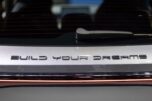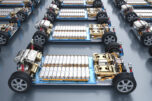Brazil’s 2024 EV market is a tariff test case

Brazil is no minnow in the global auto industry. Last year the country produced 2.3 million vehicles, 1.8 million of which were passenger cars.
Led by Stellantis, Volkswagen and Toyota, most major automakers have established production facilities in Brazil. Passenger vehicle output was down slightly on 2022 and car exports dropped by more than 20% to just over 300,000 units in 2023.
However, while the nation’s general auto industry lacks luster, Brazil’s electric vehicle market is on a roll.
From January through June 2024, sales of EVs jumped by 170% to over 66,000 units on the back of an eye-popping 749% surge in the number of full electric vehicles (BEVs) finding new owners compared to H1 2023.

The combined battery capacity of EVs, including plug-in (PHEV) and conventional hybrids (HEV), sold during the first half of this year has quadrupled to 1.8 GWh from little over 0.4 GWh during the same period last year.
The South American nation has the fastest growing major EV market worldwide and overtook India, Mexico and Indonesia to rank as the 21st largest EV market on a GWh basis in H1 2024. In the region, Brazil’s EV market in GWh terms is more than 10 times the size its nearest rivals, Colombia and Chile.
Brasília implemented an import tariff on BEVs of 10% at the start of 2024, which rose to 18% in July and will top out at 35% in July 2026. PHEV and HEV duties started at 20% and 25% respectively and will also rise to 35% two years from now.
While the tariffs may have spurred some car buyers to pull forward purchases to beat the July deadline, it is not enough to explain the massive success of Chinese exporters to the country.

In 2021, 5% of the EVs sold in Brazil were manufactured in China. Year to date, however, that figure has increased to 70% and if you strip out HEVs, which are minimally electrified, it climbs to 86%.
BYD, in particular, has transformed the Brazilian market.
In terms of sales, from a standing start in 2022, BYD has captured 47% of the overall market. Based on battery capacity rolled onto the country’s roads during H1 2024, BYD was responsible for 63% of all GWh deployed.
BYD’s dominance has had other knock-on effects. The Shenzhen-based company, which uses its own LFP batteries across its fleet, has helped to push the share of the nickel-, cobalt- and manganese-free packs to 71% of the market in Brazil. In 2022, the comparative figure was just 11%.
With Tesla glittering in its absence, BYD together with Great Wall Motors, Geely, Chery and JAC, Chinese-owned automakers command 90% of the Brazilian EV market on a GWh basis. Likewise, Chinese cell suppliers were responsible for more than 86% of the fresh power hours hitting Brazilian roads this year.
Adamas take:
Brazil’s maximum 35% import tariff by July 2026 compares favorably with that of the EU and US, which target made-in-China vehicles specifically.
EU duties range from 27.4% for BYD to 48.1% on SAIC, with the majority of Chinese automakers (and Teslas, BMWs and Dacias made in Shanghai) subject to a 31% duty. The US now has a blanket levy of 102.5% on all Chinese vehicle imports.
For Brazil, the imposition of import tariffs may turn out to be moot. Great Wall Motors recently started production of, among others, a hybrid version of its popular Haval SUV and pickup truck after a $1.8 billion investment.
BYD already manufactures electric buses in Brazil and has a second half of 2025 target for the start of operations at a new 150,000 per year EV plant in the country.
Even at the breakneck rate Brazil’s electric vehicle market is expanding currently, BYD would be more than able to meet the demands of the country’s car parc’s electrification by then.





